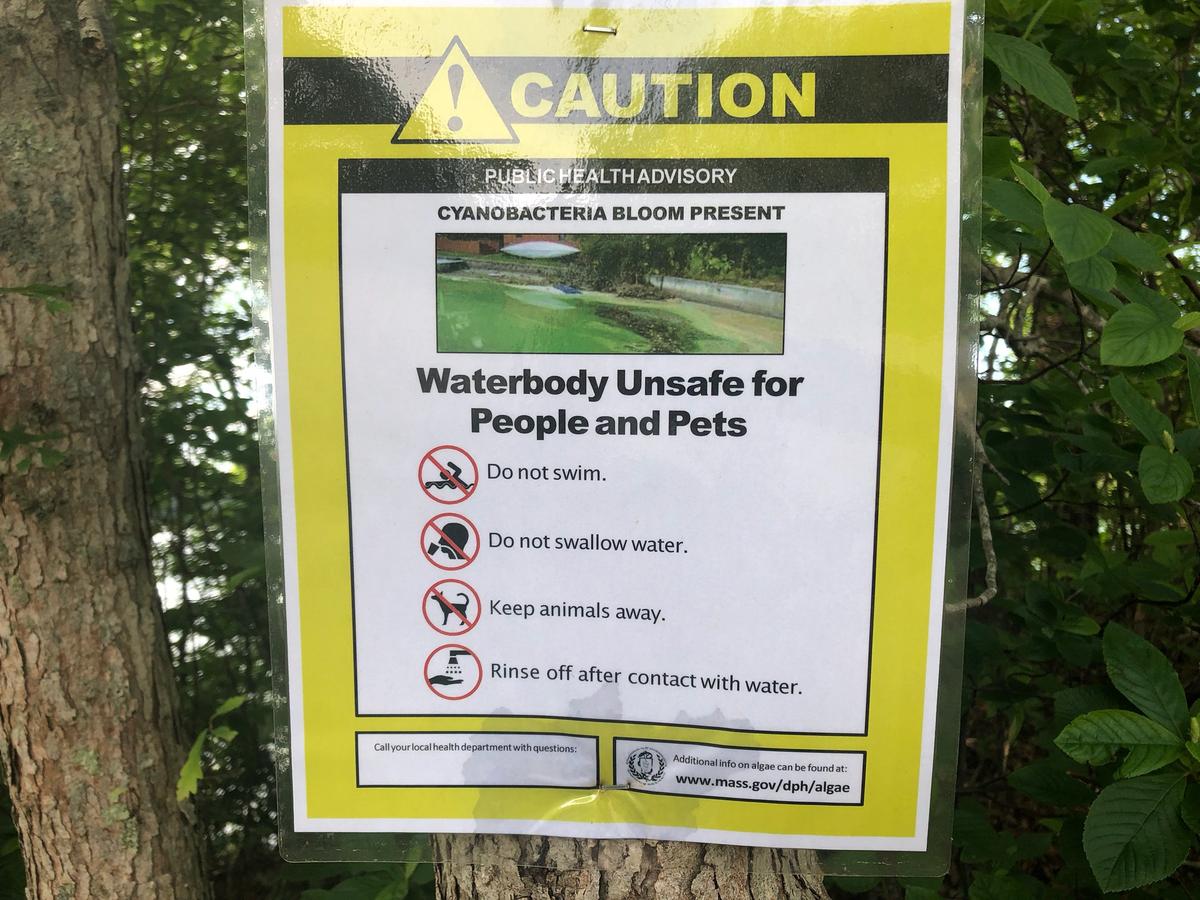CapeandIslands.org
By EVE ZUCKOFF
JUN 28, 2019
The Cape Has 1,000 Freshwater Ponds. How Many Are Toxic?
On a typical June evening at Santuit Pond in Mashpee, fishermen like Ted Kingsley can be found perched by the shore, or wading through the water, looking for bass.
“The [deepest] I’ve been — up to my ankles in it, maybe,” Kingsley said.
He said he won’t go in past his ankles, though; something about the water isn’t right.
The transparency ends about a foot-and-a-half past the shore, and it has a blue-green cast, almost the color and clarity of pea soup – a common reaction to an overabundance of micro-organisms called a cyanobacteria bloom.
When blooms form, some types of cyanobacteria release dangerous toxins that can pose public health risks.
Of the approximately 1,000 freshwater ponds on Cape Cod, only 22 are being monitored for algal blooms that can cause health problems ranging from skin irritation, to fevers, to major organ damage. And the number of these blooms could be growing.
The Association to Preserve Cape Cod (APCC) has been at the forefront of the effort to monitor the ponds and notify the public.
When testing Santuit, the APCC found levels of the bacteria were about 10 ten percent above the point at which the Massachusetts Department of Public Health recommends ponds be closed for recreation.
There are now several warning signs around the pond’s public entrance telling people not to swim or even let their pets go in.
But those levels might not tell the whole story, according to Keith Loftin, of the United States Geological Survey.
“Since we don’t know why toxins are produced and what controls [them]…. it’s hard to know when a bloom is going to become toxic,” Loftin said.
The toxins can be ingested or inhaled, but it’s not always clear what effect they’ll have on different people.
In recent years, researchers have observed lakes and ponds around the country with toxin levels so high, they’ve been connected to a series of dog deaths. The toxins also could affect wildlife like ospreys and bald eagles that fish and forage around the pond.
Even still, these algae blooms aren’t new, nor is it clear whether they’ve increased in recent years. But cyanobacteria have been shown to thrive when they’re in warm water and have access to nutrients from fertilizers and septic systems.
“One of the effects of the warming trend that we’ve seen over the last decades, is that we’re creating … broader climate conditions that are conducive to allowing cyanobacteria to proliferate and outcompete other species,” according to Andrew Gottlieb, executive director of APCC.
With climate change in mind, researchers from institutions like Tufts, MIT, and the EPA are narrowing in on the future of these blooms. They predict that in the next 70 years a combination of extreme weather and population growth will produce even more nutrients that will seep into our water bodies, which have steadily warmed over decades.
That recipe is expected make these blooms even more prevalent.
“We’ve got global climate change, which is particularly intense in the Northeast, and we’re over-enriching these waters with nutrients. So we’re getting it on both ends,” Gottlieb said.
The APCC now is working with towns on the Cape and the Massachusetts Department of Public Health to identify the best system of testing suspicious ponds and, in turn, alerting the public when necessary.
A spokesperson from the MDPH said in a statement that the state “works with waterbody operators to evaluate and respond to these reports.”
Gottlieb said he’s worried that’s not enough.
“The problem is you’ve got a … 200-acre pond. The town owns one particular spot as a boat launching ramp. There are two 8-by-11 sheets of paper with warnings, so it’s a challenge to provide adequate public notice to the rest of the public.”
Still, there are solutions. Among them: targeted sewering to reduce nutrients seeping into ponds through groundwater. Also, Gottlieb said, lay off the fertilizers.
“People really ought to think hard about what they’re doing on their own properties because it can have a meaningful impact on solving or limiting the effects of this issue while the larger, systemic issues are being worked on.”
In the meantime, he’s not taking any chances.
“I will say this: I had my dogs at work with me today, and before we came I dropped them off at home because I didn’t want them walking around the water here,” said Gottlieb.
But what will it take to stop Ted Kingsley from fishing in Santuit?
“Well if I don’t catch any fish,” he said, “I don’t want to fish here anymore.”
The Cape Has 1,000 Freshwater Ponds. How Many Are Toxic? – CapeandIslands.org


